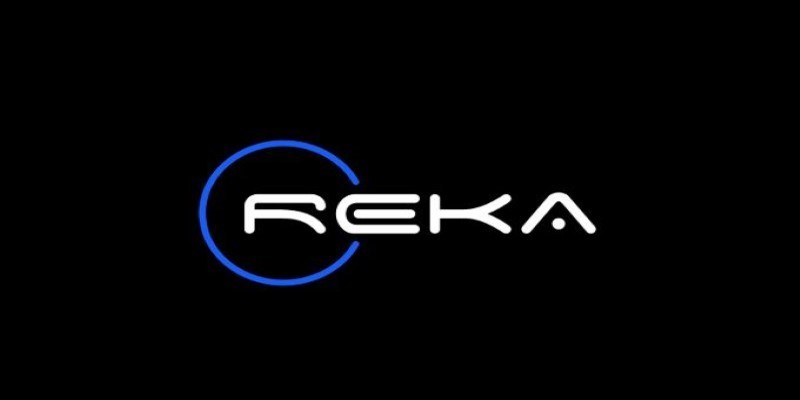Advertisement
The final stretch of a package’s journey — from a warehouse or hub to a customer’s doorstep — has always been the hardest part. Known as last-mile delivery, this stage eats up more time, fuel, and money than any other. Businesses have struggled for years to make it more efficient while keeping customers happy.
Now, an AI assistant designed to rethink how these deliveries happen is stepping in. This new kind of assistant is more than just software running behind the scenes — it actively guides drivers, updates customers, and adapts to changing conditions as deliveries unfold.
Last-mile deliveries present unique challenges that traditional logistics systems still fail to solve. Traffic congestion, limited parking, locked buildings, and customers who aren’t home at the scheduled time create delays and raise costs. In some cities, regulations on vehicle access or specific delivery time slots make routing even harder. In rural areas, long distances between stops and incomplete map data add another layer of complexity.

Customer expectations compound the problem. Same-day or next-day shipping is no longer a luxury — it's a standard. That forces companies to deliver more packages in less time while trying to control costs. The last mile can consume up to half of the overall delivery budget because each stop is unique and unpredictable. Traditional route-planning tools help to some extent, but they can't adjust to sudden changes, such as accidents or construction, in real time. Drivers often end up improvising under pressure.
These conditions have created a demand for smarter, more flexible solutions. The AI assistant enters at this point — not to replace people, but to support them, taking over the heavy calculations and decision-making that drivers don't have time for on the road.
An AI assistant brings a different level of intelligence compared to standard routing software. Instead of creating a fixed plan at the start of the day, it adjusts dynamically as the situation evolves. Traffic jams, bad weather, building access issues, and customer requests all get factored in instantly. Drivers don’t need to stop to figure out the next best move — the assistant provides updated directions and priorities with minimal disruption.
The AI also improves customer communication. If a delay happens, it sends updated delivery windows to customers automatically. If a time-sensitive package risks being late, it can rearrange the driver's sequence to ensure it arrives earlier. This responsiveness helps drivers focus on driving and delivering, rather than managing calls or rerouting themselves.
Over time, the AI assistant becomes more effective as it learns. It identifies recurring patterns such as addresses where no one is usually home during certain hours, buildings with hard-to-find entrances, or areas prone to frequent traffic bottlenecks. It uses that knowledge to refine future routes and improve planning accuracy, which cuts down on failed deliveries and wasted miles.
The assistant also lightens the mental load on drivers. They no longer need to juggle dozens of variables in their heads while staying on schedule. This reduces stress and helps them complete their routes more efficiently.
The AI assistant’s impact extends beyond drivers. In warehouses, it helps organize packages in the right order based on the delivery sequence. Packages destined for the earliest stops are loaded last so they’re easy to grab, saving time at each drop-off. When unexpected changes come up — like a driver being delayed or a customer updating their delivery instructions — the AI relays that information back to warehouse staff and updates the route accordingly.

For customers, the benefits are just as significant. Delivery windows are more precise, and real-time tracking is more accurate. When a customer sees exactly when to expect their package and can reschedule or reroute it through an app, the number of failed delivery attempts drops noticeably. That improves customer satisfaction and reduces wasted trips for drivers.
Another subtle advantage is the feedback loop the AI creates. Each time a customer or driver reports an issue — such as a broken building intercom or construction blocking an entrance — that information is saved and factored into future deliveries. Over weeks and months, this makes the system smarter and more tailored to the local conditions in each neighborhood or route.
The AI assistant is not designed to replace people. It acts more like a co-pilot, handling repetitive and data-heavy decisions so drivers and coordinators can focus on the human side of the job. Drivers find it frees them from constant stress about timing and lets them deliver more efficiently without cutting corners.
Looking ahead, AI assistants are likely to connect with other innovations, such as electric delivery vans, automated lockers, and even drones for rural or remote deliveries. These technologies will complement each other, but the assistant’s core role will remain the same — making decisions quickly and accurately to keep deliveries on track.
Companies already using AI assistants report clear benefits: lower fuel consumption, fewer missed deliveries, and improved customer reviews. Over time, these changes will reshape the expectations for how goods move through local networks, making last-mile delivery more predictable and affordable while maintaining a human touch.
Last-mile delivery has always been the most demanding part of getting goods to customers, but the rise of AI assistants is starting to change that. With its ability to learn, adapt, and communicate, the assistant gives drivers and customers a smoother experience and helps companies reduce waste. Instead of adding complexity, it simplifies decisions and provides steady support where it’s needed most. As demand for fast, reliable deliveries grows, AI assistants are poised to become a standard part of the process, working quietly alongside people to make every mile count.
Advertisement

Build scalable AI models with the Couchbase AI technology platform. Enterprise AI development solutions for real-time insights

Looking for a desk companion that adds charm without being distracting? Looi is a small, cute robot designed to interact, react, and help you stay focused. Learn how it works

How an AI assistant is transforming last-mile deliveries by improving efficiency, reducing costs, and enhancing customer satisfaction through smarter routing and coordination

Nonprofit applies supply chain modeling to improve eye transplant delivery systems, improve healthcare logistics, reducing delays

Learn how the SQL SELECT statement works, why it's so useful, and how to run smarter queries to grab exactly the data you need without the extra clutter

Want to run LLaMA 3 on your own machine? Learn how to set it up locally, from hardware requirements to using frameworks like Hugging Face or llama.cpp

Discover Reka Core, the AI model that processes text, images, audio, and video in one system. Learn how it integrates multiple formats to provide smart, contextual understanding in real-time

The IBM z15 empowers businesses with cutting-edge capabilities for hybrid cloud integration, data efficiency, and scalable performance, ensuring optimal solutions for modern enterprises.

MIT is leading a focused initiative to integrate AI and emerging technologies into manufacturing, prioritizing real-world impact for manufacturers of all sizes

Starting with databases? Learn how SQL CREATE TABLE works, how to manage columns, add constraints, and avoid common mistakes when building tables

How to supercharge your AI innovation with the cloud. Learn how cloud platforms enable faster AI development, cost control, and seamless collaboration for smarter solutions

Learn how to make your custom Python objects behave like built-in types with operator overloading. Master the essential methods for +, -, ==, and more in Python